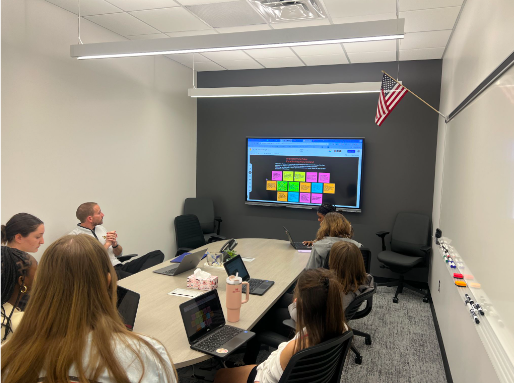Roadblocks in Client-Connected Projects
Written by: Zachary Johnson, North Kansas City Schools
Embarking on client-connected projects in the arts is a transformative journey for both educators and students. Admittedly, it is easy for teachers to think that this work does not apply to their courses because our calendars are already full preparing for set performances and competitions. As a group of dedicated teachers, we have navigated the challenges and triumphs of integrating real-world clients into our creative spaces. In doing so, we realized that the arts’ are partially the originators of integrating real-world learning strategies into student experiences. Turning this intuitive work into official client-connected projects was truly rewarding and invigorating for everyone involved. Embarking on client-connected projects opens doors for students to authentically showcase their creativity while navigating real-world challenges. Here is a glimpse into our experiences and the roadblocks we faced, along with insights into how to overcome them.

Heather Rimmer, yearbook and media teacher at Kearney High School, and her students hosted a senior ad night for their CCP. This process allows parents of seniors to create an ad for their children congratulating them on graduating high school. Heather indicated that her major roadblock was the lack of participation from the parents at the first ad night, which then caused concern in regards to funding for their yearbook.
Laura Columbatto, journalism teacher at Ray-Pec Ninth Grade Center, is in her first year of teaching the course and indicated that many of her roadblocks stem from the unknown. According to Laura things were slow to get underway because they had to answer many questions regarding the client and what path she wanted to take with her given project.
Don Simon, a broadcast journalism teacher at Smithville High School, worked with his students to create a radio show for their school radio station. According to Don, his students were very excited with the idea of the project, but quickly lost steam in the planning when they realized how much work went into just a ten-minute segment.
All three teachers had to navigate these roadblocks and find ways to continue their project in spite of them. At our November meeting, they were able to share ideas bounce ideas off one another, and brainstorm solutions that would help them navigate the obstacles. Heather reached out to parents to set up another plan for an ad night, offering more variety in times and dates.
Once Laura finalized her client and the specific project idea, she and her students were able to get underway with some empathy work that really helped students new to design thinking grasp the importance of understanding the needs of their stakeholders. Don was able to encourage students to share their progress with the stakeholders and go back and make changes based on the feedback. The student radio show currently has ten different shows and will be made available for listeners in the second semester.
Don, Heather, and Laura are all continuing their work into the second semester and we are looking forward to seeing the final product for all three projects.
